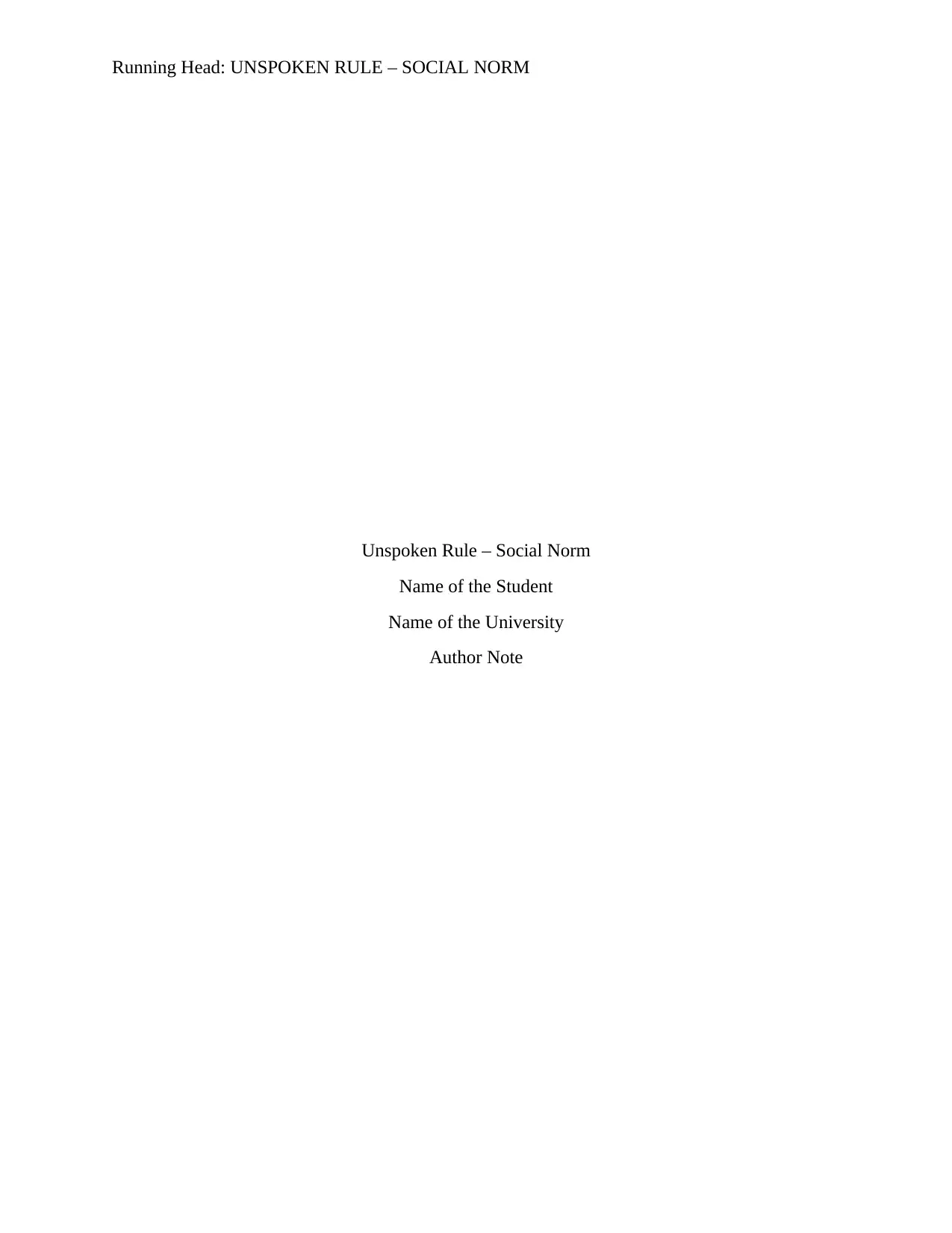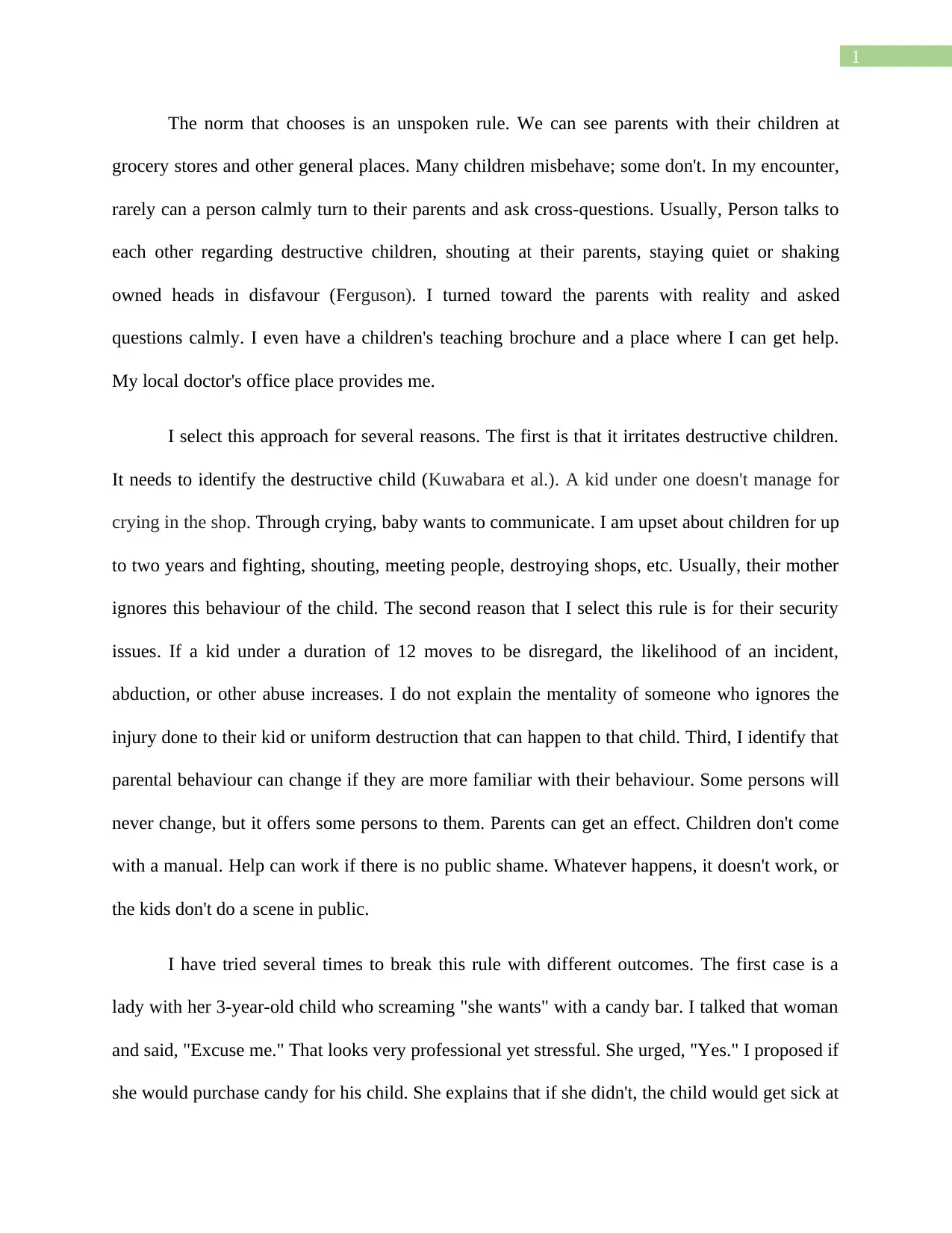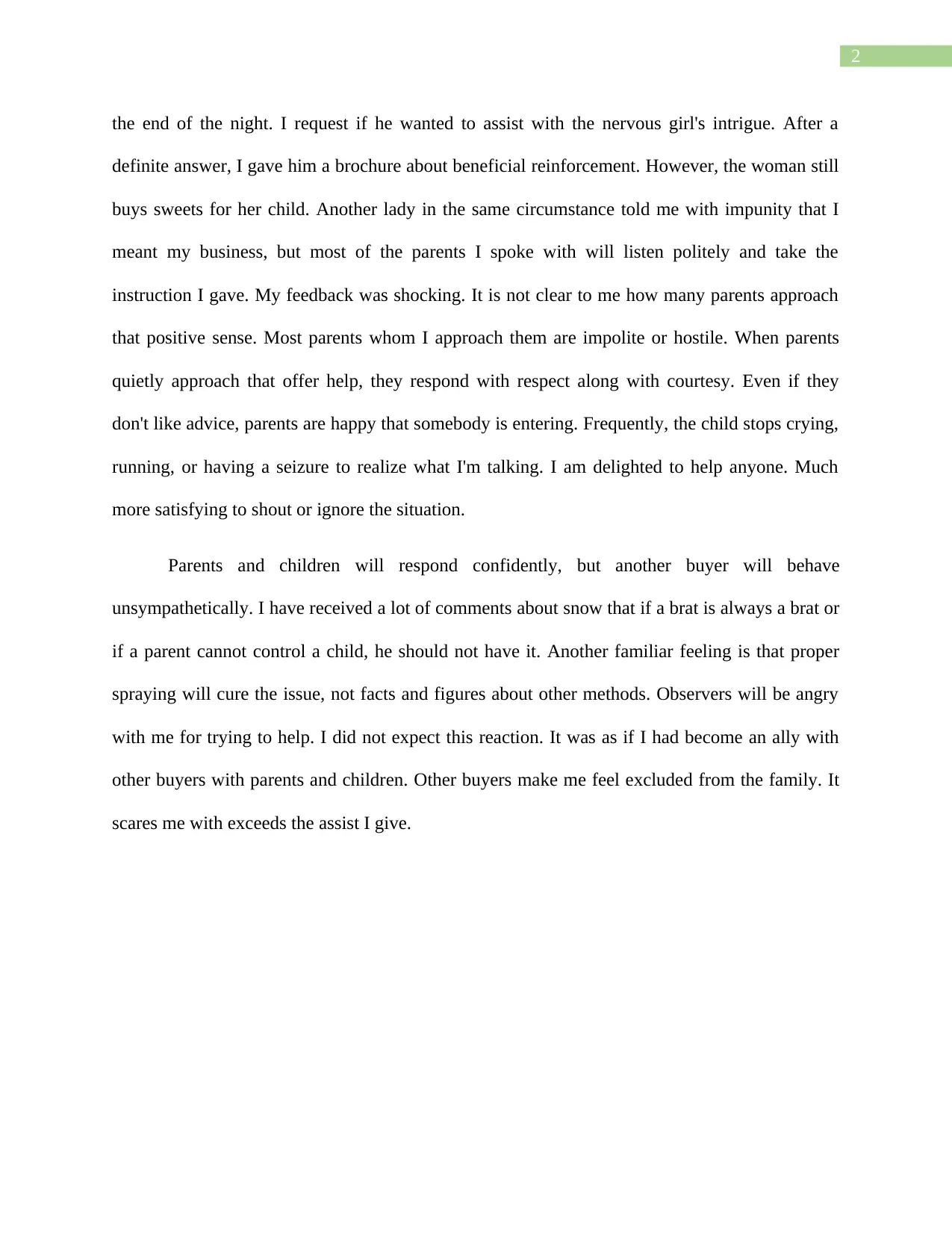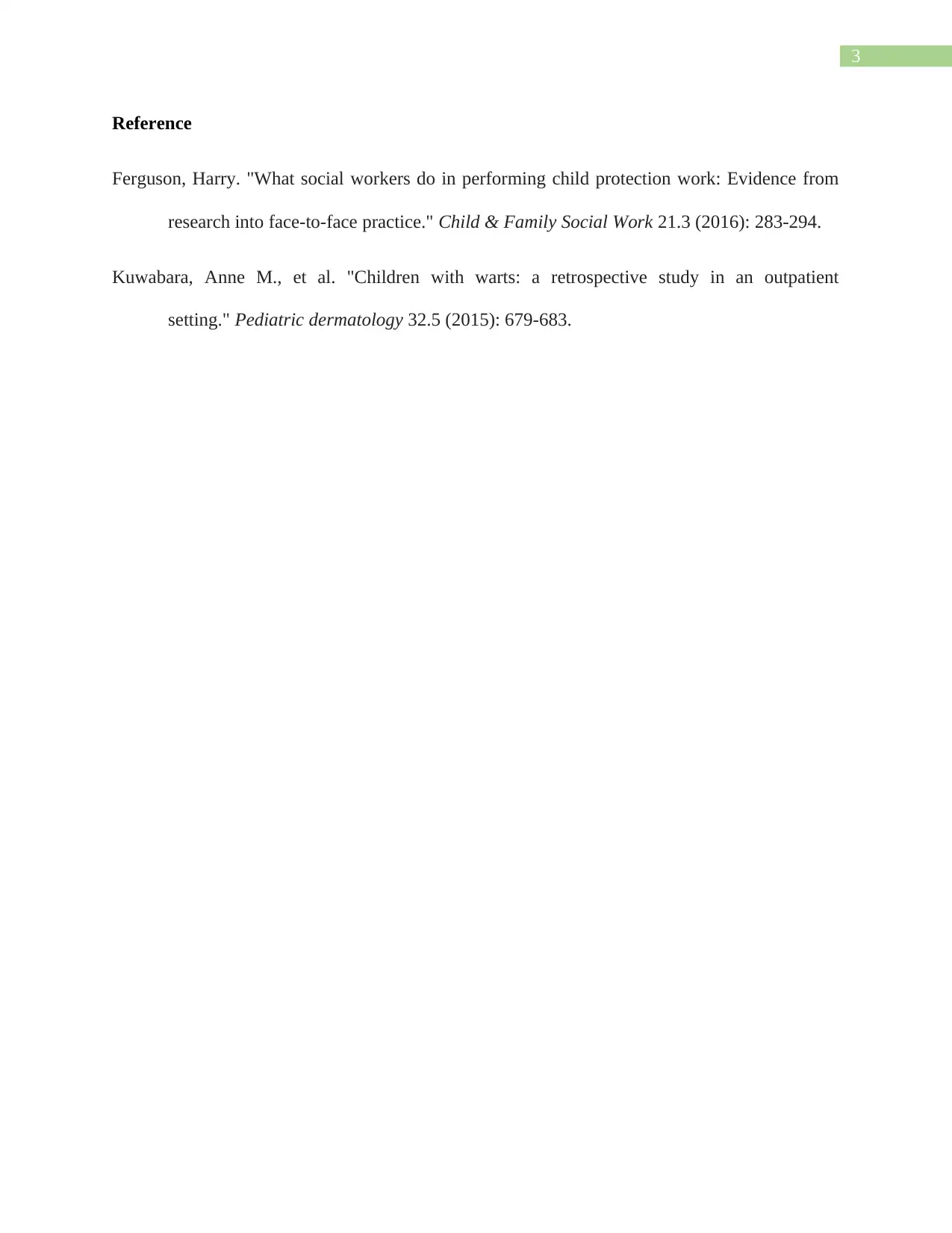Breaking Norms Essay: MGT-3253, Spring 2020, University Assignment
VerifiedAdded on 2022/08/08
|4
|818
|29
Essay
AI Summary
This essay explores the student's experience of breaking an unspoken social norm concerning parenting behavior in public spaces. The author focuses on the tendency of parents to ignore or passively respond to their children's misbehavior in public settings. The student details their attempts to intervene and offer assistance to parents, describing various interactions and the reactions received. The essay delves into the motivations behind the student's actions, including concerns for the child's safety and the belief in the potential for positive change in parental behavior. It also reflects on the unexpected responses from other observers, highlighting the complex social dynamics surrounding parenting and public conduct. The essay references related research, such as Ferguson's work on child protection and Kuwabara's study on children's health, to provide context to the observations.
1 out of 4





![[object Object]](/_next/static/media/star-bottom.7253800d.svg)